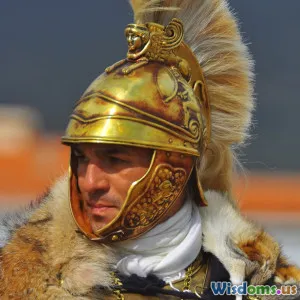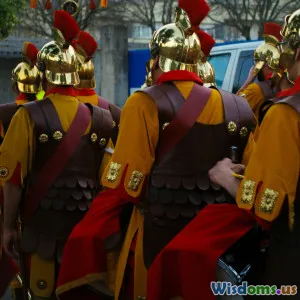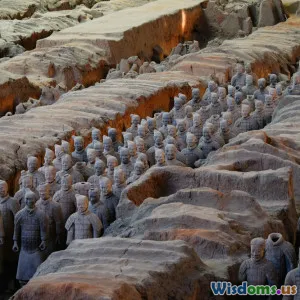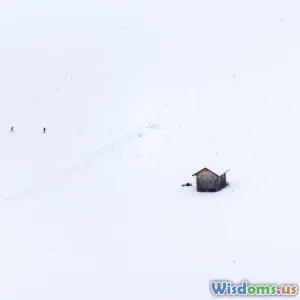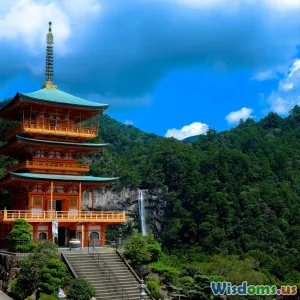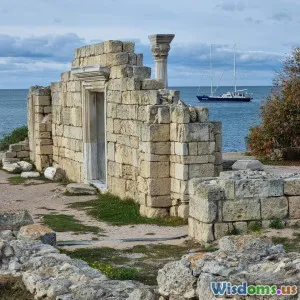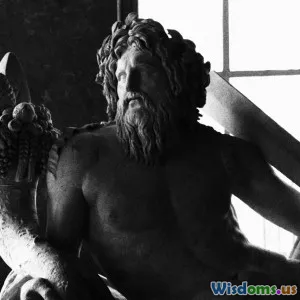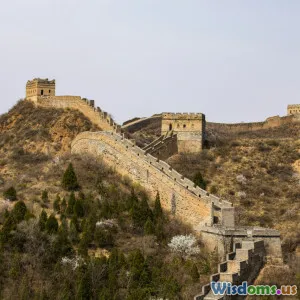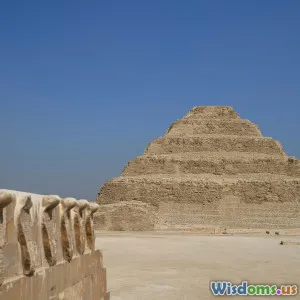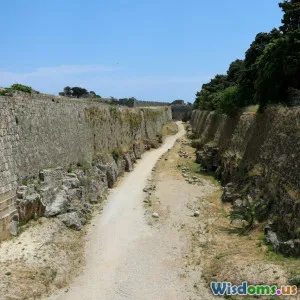
What Made Roman Fortresses Nearly Impenetrable
14 min read Discover the ingenious designs and strategies behind the nearly impenetrable Roman fortresses. (0 Reviews)
What Made Roman Fortresses Nearly Impenetrable
Long before aviation and cannon fire changed the rules of war, ancient armies relied on clever engineering, discipline, and strongholds to tip the balance. The Roman military—an organization renowned for its adaptability—was masterful in the art and science of fortification. Their forts, known as castra (singular: castrum), were more than just defensive structures; they were calculated expressions of dominance and ingenuity. These encampments, many of which have survived centuries, reveal tactical sophistication that left even advanced enemies at a loss. But what exactly made Roman fortresses nearly impenetrable, and why did their designs endure for millennia?
Mastery of Strategic Placement

A fortress is only as defensible as its location. Roman military architects considered geography paramount, often selecting sites that maximized natural defenses or controlled key resource points. Typically, a castrum would rise near rivers, on elevated ground, or amidst natural barriers like rocky outcrops or dense forests.
Concrete Example:
- The fortress at Vindolanda in northern Britain, constructed near the River South Tyne and high enough to command wide-ranging views, acted as a sentinel for the famous Hadrian's Wall.
Roman engineers also tailored layouts based on local threats. In Dacia (modern Romania), forts overlooked valleys where hostile tribes could approach, using uneven terrain to create chokepoints for attackers. Border installations in North Africa would utilize deserts as much as ramparts, letting searing heat and open dunes exhaust invading forces long before they faced Roman swords or arrows.
The careful attention paid to site selection transformed every inch of Roman territory into a calculated chessboard, where the terrain did half the defensive labor.
Ingenious Fortification Design and Layered Defenses
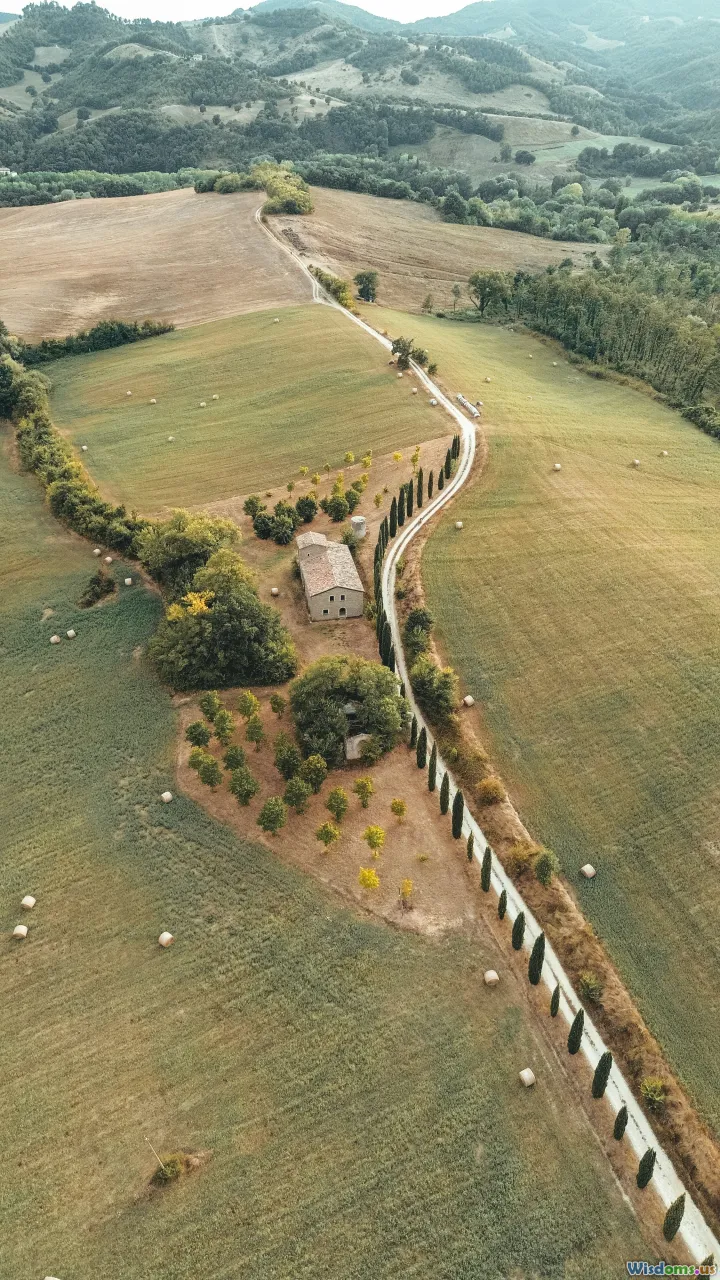
A hallmark of Roman fortresses was their orderly, repeating layout—a brilliant balance between standardization and strategic brilliance. The typical castrum was rectangular (a "playing card" shape), with rounding at the corners to minimize the effects of siege engines.
Multiple Defensive Layers:
- Ditches (Fossae): Dug around the exterior, ditches hindered sprinting infantry or cavalry. The famous triple ditches—three concentric troughs—offered three lines to slow, trip, and channel advancing units.
- Ramparts (Agger): Behind ditches, massive earthen mounds rose several meters, sometimes embedded with wooden or stone facings. Aggers provided platforms for defenders to survey and attack.
- Walls (Vallum): Walls surmounted ramparts, initially timber palisades, later evolving into mortared masonry several meters thick and high, too sturdy for rams or fire.
- Towers and Bastions: Elevated, regularly spaced towers expanded the field of fire, essential for archers, slingers, and artillery crews (notably the scorpio and ballista missile launchers).
Gates: Fort gates—the single most vulnerable spots—were true masterpieces. Triangular arrangements of intersecting roads, flanked by projecting towers, forced attackers to expose flanks when assaulting or retreated. Heavy gates boasted iron reinforcement, multiple closure systems, and sometimes even clever trap devices.
"At the legionary fortress of Caerleon in Wales, thick red sandstone walls, three outworks of ditches, and protruding gatehouses turned each approach into a death trap."
In these layered defenses, an army needed advanced siege technology and enormous manpower just to approach the wall—let alone breach it.
Advanced Construction Techniques and Materials
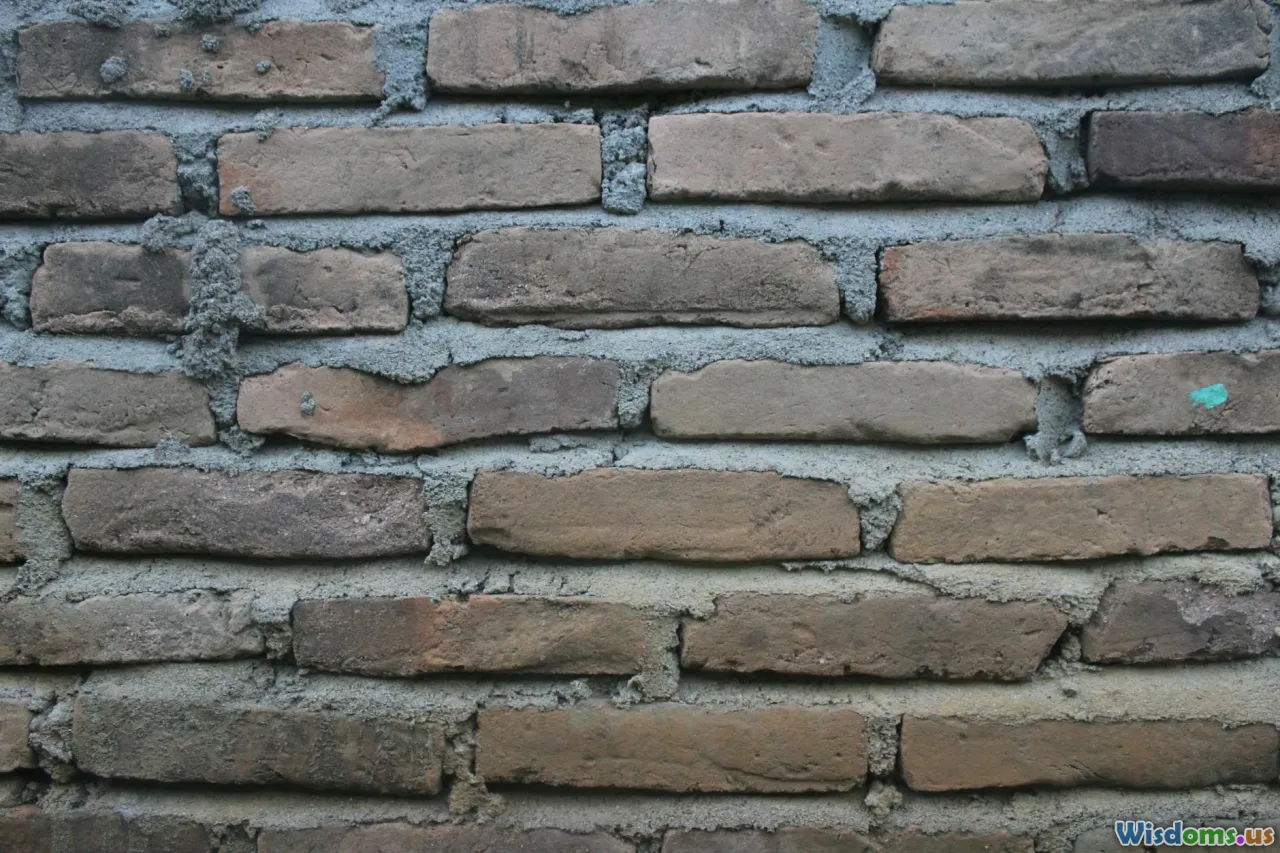
The "Roman touch" worked wonders thanks to engineering skill and novel building materials. The use of opus caementicium—Roman concrete—ushered in a construction revolution. This concrete, made from lime mortar, water, sand, and volcanic ash (pozzolana), could set underwater and grew stronger with time.
Notable Innovations:
- Basalt or River Stone Foundations: Provided structural stability on diverse terrain. The Saalburg fort in Germany stands today thanks to deep-set stone footings fighting seasonal moisture.
- Brick and Mortar Bonding: Outer and inner walls of fired brick or heavily dressed stone, with concrete fill in between, hardened into barriers that outlasted wooden siege engines and weather’s persistent wear.
- Contoured Planning: Romans built rounded "externae" corners, reducing the force distributed by battering rams.
This approach meant fortresses were not simply formidable—they were enduring. Many walls and gates still stand after nearly two millennia, dwarfing later medieval imitations for resilience and relative ease and speed of construction.
Efficient Internal Organization for Rapid Response

A fortress didn't just keep enemies out—it kept soldiers ready within.
Grid Layout: Roman forts followed strict internal plans. Streets ran at right angles: the via praetoria (main thoroughfare) led to the headquarters (principia), while via decumana and via principalis connected barracks, workshops, and granaries in a rational grid. This organization enabled:
- Rapid troop deployment: Legions deployed from clearly marked gates, with order maintained during chaos.
- Logistical efficiency: Armories, smithies, and storehouses centrally located so soldiers could re-arm or refuel quickly in siege breaks.
- Hospital (valetudinarium), baths, and amenities: Crucial for maintaining morale, even under extended threat.
Case Study: Housesteads Fort (Vercovicium), Hadrian’s Wall: Archaeological studies show distinct soldier quarters, centurion’s houses, and communal latrines. Such accommodations meant troops were well-rested, disciplined, and healthy—harder to defeat than a weary, disorganized garrison.
Discipline and Regimented Garrison Routines

Physical defenses were mere multipliers of human resolve. The Roman army’s greatest strength was its discipline, rigorously enforced each hour of every day:
- Regular Watches: Rotating sentry duties ensured every gate, tower, and rampart sector was always manned and alert. Failure could mean the harshest punishment—sometimes death.
- Drills and Training: Garrison troops trained constantly, honing skills in night operations, repelling escalades, and rapid massing in threatened sectors. Vegetius, in his treatise De Re Militari, states: "A Roman army, whether encamped or beset, considers itself in the field."
- Order and Cleanliness: The infamous Roman concern for hygiene reduced disease and kept fortifications from becoming death traps in a siege.
Consider Masada, perhaps the most storied siege in Roman history. Even rebelling Jewish defenders adopted Roman organizational models, so effective were they at sustainability within a besieged stronghold.
Use of Intelligence, Allied Surveillance, and Early Warning Systems
No wall is completely self-reliant; early detection is vital. Romans devised vast intelligence and warning networks:
- Signal Towers: Communicated approaching enemies with smoke by day and fire by night. Along Hadrian’s Wall or Saharan fort lines, signal stations relayed urgent warnings over tens of kilometers within minutes.
- Patrols and Scouts: Auxiliary cavalry scanned perimeters, pipelines for reconnaissance which fed information to garrison leaders daily.
- Allied Outposts: Roman neighbors and allied tribes often maintained outposts along the same axis, providing further warning depth.
Historical Note: During the chaotic 3rd century, the limes (frontier) forts along the Rhine and Danube utilized complex beacon systems to pre-warn of Germanic raiders, giving even isolated fortresses a crucial head start to prepare or summon nearby relief.
Massive Support Infrastructure for Siege Sustainability
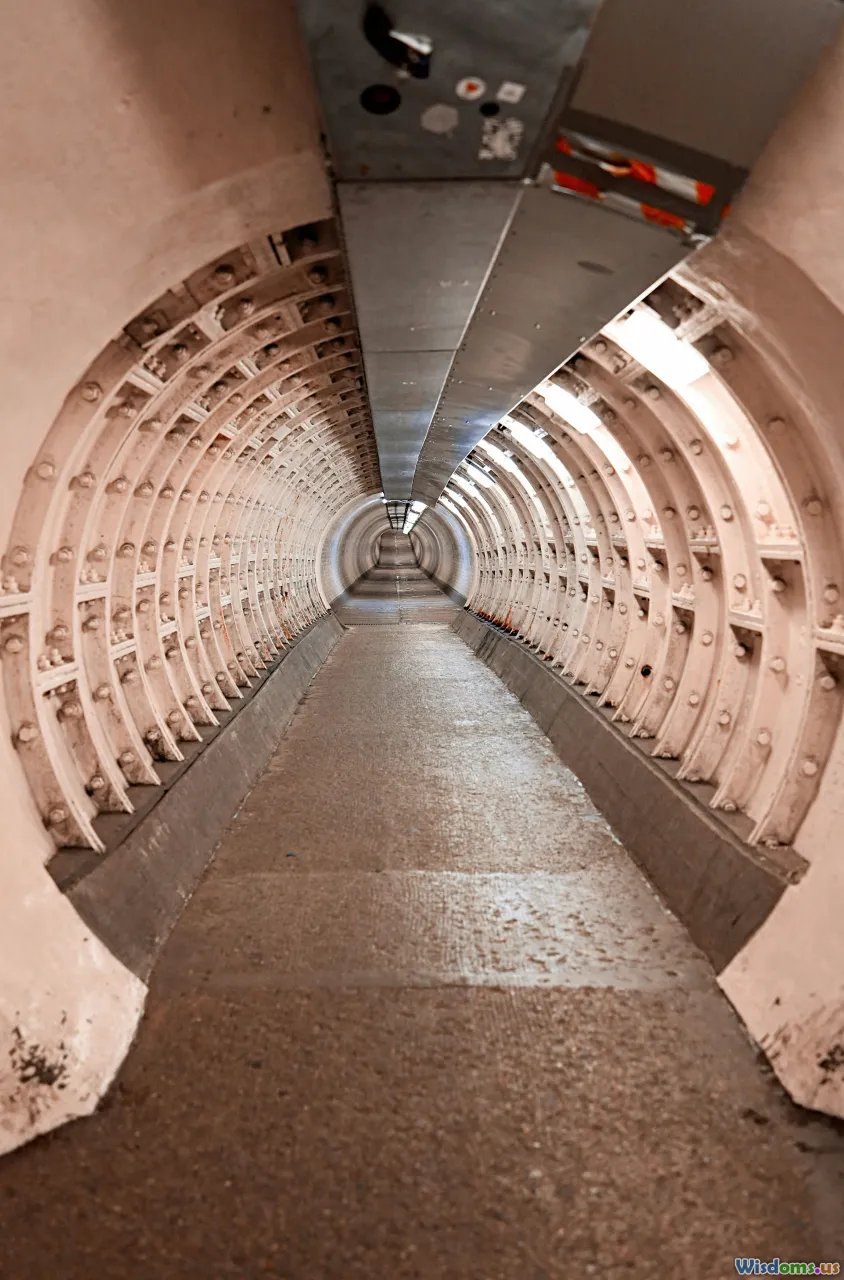
A besieged fortress cannot rely solely on solid walls or valiant defenders—it must outlast attackers who seek to starve, parch, or strain it into surrender.
Self-Sufficiency Features:
- Granaries (horrea): Elevated stone structures prevented rot and infestation; Vindolanda’s wood-lined storage pits could hold months’ worth of grain and jerked meat.
- Rainwater Harvesting and Cisterns: Integrated into layouts, these cisterns or even full aqueducts supplied forts far from rivers. The fort at Nijmegen (Netherlands) maintained drinking water and even bathhouses amid a siege, blunting the classic stratagem of thirst.
- Bakeries and Workshops: Equipment repair, bread baking, and metalworking occurred within walls to minimize risky sallying.
This infrastructure meant hungry, exhausted garrisons (and subsequent surrenders) were rare, even during prolonged pressure, as during the Marcomannic Wars where border forts held out for months against repeated assaults.
Adaptation to Emerging Threats: Rome as the First "Dynamic Defenders"

The Romans were masters of calculated adaptation. If enemies developed new tactics or weaponry, engineers would alter fortress features accordingly.
Examples of Reactive Innovation:
- Sloped Walls and Extended Ditches: When migratory tribes used sapping and tunnels, Romans lengthened outworks, making underground approach more hazardous.
- Onager and Ballista Emplacements: Towers were retrofitted with platforms for heavy onager catapults, responding to waves of siege ladders in later Empire conflicts.
- Murder Holes and Machicolations: Borrowed and improved as threats grew more sophisticated—for example, using hot sand or oil to break up assault parties.
When highly mobile foes such as Sassanid Persians or Hunnic cavalry raiders emerged, fort plans grew more compact and resilient, focusing on mutual support between neighboring castra and rapid reinforcement, rather than single-site invincibility.
Psychological Impact on Potential Attackers

Finally, Roman fortresses employed power as a psychological weapon. Massive walls, bristling towers, and repeating patterns of power asserted dominance across the empire.
Imposing Architecture:
- Outsiders approaching the fortress at Chesters (Cilurnum), overlooking the River North Tyne, would be greeted by tall gates, marching silhouettes atop walls, and banners—suppressing morale before battle commenced.
- Sight lines were deliberate: seeing multiple towers manned and bristling with weaponry from a great distance sent a clear message—this was not a place to attempt an assault lightly.
Ancient chroniclers report local tribes and even Persian generals refusing to assault Roman forts without overwhelming odds or sophisticated siege equipment. The implied message: survive or perish, Romans do not yield.
Centuries after the empire’s fall, the skeletons of these mighty fortresses dot the old Roman world, silent proof of prowess in both war and design. From careful siting and ingenious walls to sustainable infrastructure and psychological swagger, Roman castra set the gold standard for military fortresses—and their secrets still inspire engineers and tacticians across the globe.
Rate the Post
User Reviews
Popular Posts










